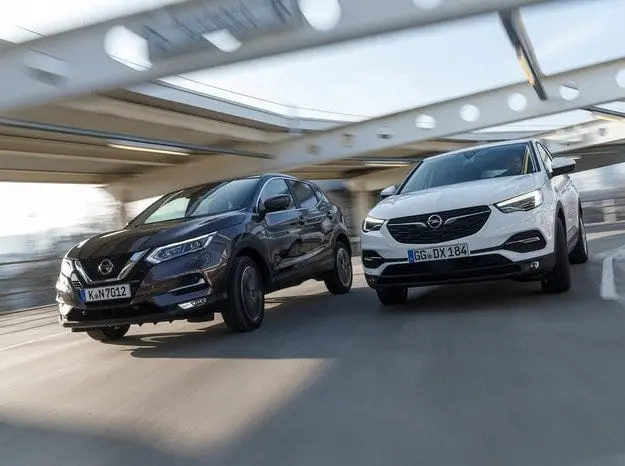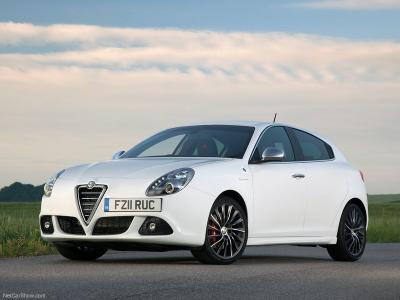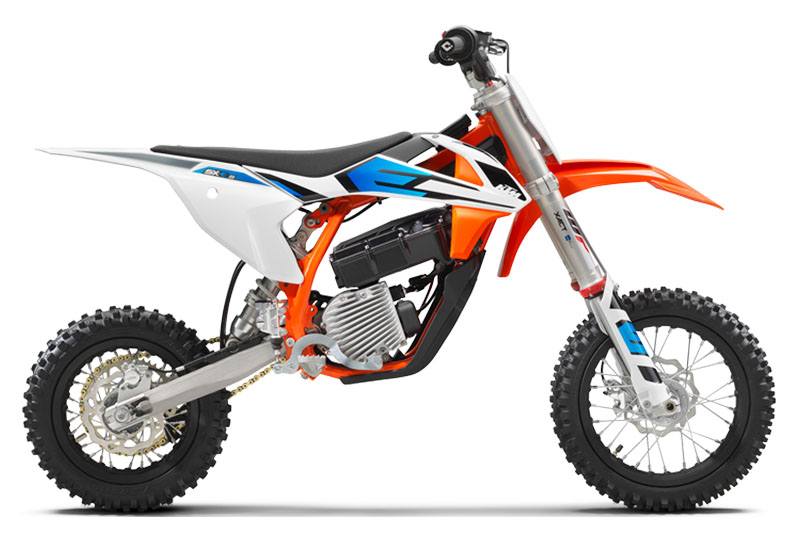
Test drive Nissan Qashqai, Opel Grandland X: the charm of practicality

Competition between two popular models from the compact segment
SUV doesn't necessarily mean something oversized with over 300 hp. and double transmission. It could also be a much more modest car with a small petrol engine, like the Nissan Qashqai i Opel Grandland X. With an affordable price, practicality and not-so-humble vision.
First, let's clarify what "not so modest vision" means. Neither of the two tested models flaunts its size, but at the same time it is not small with a body height of 1,60 meters. Added to this are the expressive headlights, the powerful grille that matches the powerful sidewall shapes and, of course, the increased magnification. All of this creates a sense of solidity and off-road ability - even in the tested Nissan Qashqai and Opel Grandland X, driven only by the front wheels.
Both models may not evoke associations with premium cars, but they are far from the budget zone either. A glance at them shows how much the compact class has changed, targeting the middle-income segment of the population. For the same middle class, price levels are within acceptable limits. Even for the well-equipped mid-range at Nissan and the higher of the two at Opel, the price does not exceed 50 leva. The Japanese model in the test is powered by the N-Connecta, powered by a new 000-liter turbocharged petrol four-cylinder. with a capacity of 1,3 hp and in Bulgaria it costs 140 47 leva (basic Visia level costs 740 35 leva). The base price of the Grandland X, equipped with a 890-liter three-cylinder turbocharged petrol engine and 1,2 hp, is BGN 130. The test car in the Innovation version costs 43 euros in Germany and is equipped with a six-speed manual transmission. In Bulgaria, however, innovations with this engine are only offered with an eight-speed automatic transmission for BGN 555.
The disclosure of the price list shows good equipment and reasonable cost of additional packages. For 950 levs with the Grandland X you get the Winter 2 package with heated front and rear seats, the All Road package with traction control costs 180 levs, and for an additional 2710 levs you get the Innovation Plus package, which also includes infotainment systems. Higher-level Radio 5.0 IntelliLink and adaptive headlights. On the Qashqai N-Connecta, the Around View Monitor, which includes four cameras and facilitates parking, is standard, as is the electric heated front two seats. Buyers of both models can look forward to a good range of assistive systems.
Sitting behind the wheel, you feel the usual feeling for these cars. A high seating position also has its benefits in terms of improved visibility – at least as far as the front view is concerned, because the wide columns reduce the rear view. To some extent, Nissan solves this problem with the mentioned standard camera system.
More space in the Opel
Time to go. Although Nissan is not skintight at all, Opel beats it in all directions by a few centimeters in the interior and provides additional customization for the front seats. In the test car, the driver and passenger next to him rely on AGR luxury seats (additional charge of BGN 1130) with retractable lower parts and electrically adjustable lumbar support. They raise the bar high and while the Nissan seats are comfortable and comfortable, they lack good lateral support. The difference is even greater in the rear seats, where Opel provides greater comfort and upper body stability for larger passengers. It's the same with the legs, which have less lateral support for Nissan passengers, and the head restraints don't have enough pull. The third passenger, in turn, must look for a way to place their feet on the wide intermediate console.
Comparison of luggage compartment volume reveals another advantage of Opel: definitely more volume and the ability to pass through thanks to the folding vertical parts of the rear seats from the rear cover. The movable base forms a double floor that can be positioned according to needs. The Qashqai offers another convenience: the moving floor can be partially folded down so that smaller items can be locked in place and avoid shifting when moving. For everyday use, both cars are comfortable, but despite their versatility, they don't count on serious load-bearing capacity - especially because of the sloping rear roofline that reduces the rear opening. Amenities are focused primarily on passenger space, and in terms of driving comfort, the Opel still has the slight advantage of fewer and better-identified steering wheel buttons. What Nissan makes up for in abundance of buttons and simple navigation graphics is a well-structured menu.
In both cases, the operation of the systems proceeds without much haste, which also applies to the operation of the engines. At idle and during acceleration, the Opel three-cylinder engine does not hide the sound characteristic of these cars, but in this case, not only does it not interfere, but eventually begins to like it. Against this background, the Nissan unit seems more balanced, quieter and calmer. For better dynamics, expressed in acceleration from 9,4 against 10,9 seconds to 100 km / h and 193 against 188 km / h top speed, nevertheless, not only better engine characteristics contribute, but also transmission tuning. At Opel, this is one idea less precise and with such long gears that to accelerate from 100 km / h you need to vigorously downshift to lower gears, where the speed increases dramatically.
The differences in travel comfort are similar. With one or two passengers on board, the Opel is more responsive and comfortable than the slightly more restless Nissan, but with the heavier cargo, things balance out.
Powerful brakes
Both cars take safety very seriously. In this area, Nissan is building a new scale with a wide range of assistance systems, including an emergency stop with pedestrian recognition. In terms of stopping power, both models are clear: 35 meters from 100 km/h to zero for the Qashqai and 34,7 meters for the Grandland X are a clear sign that there is no room for compromise in this regard. Both cars remain confident in their handling, but the Japanese model's more indirect handling has previously held back the desire for more dynamic cornering with early brake intervention. Opel counteracts a more direct and harsh steering, which, however, has little interest in what is happening on the road and gives timid feedback. However, its nature allows faster slalom and obstacle avoidance, which is associated with a later response and more accurate ESP dosing. However, the same character is not a good basis for serious off-road capabilities - in any case, the model does not offer dual transmission options and relies on the flotation of its electronic traction control system, of course taken from PSA, but dubbed Opel IntelliGrip.
Do such disadvantages degrade the quality of the SUV model? Answer: to a small extent. At the end of the day, both offer plenty of ground clearance, space and functionality. Both serve their clients' needs equally well. Once the line has been decided, Opel is one idea ahead of its rival.
CONCLUSION
1. Opel
One idea more spacious, with a slightly larger trunk and more active demeanor. The Grandland X is making up for the small price loss. Nice winner.
2 Nissan
The new engine is good and the support systems are exceptional. Less space, but also the price. In fact, Nissan is not the loser, but the second winner.
Text: Michael Harnishfeger
Photo: Ahim Hartmann

